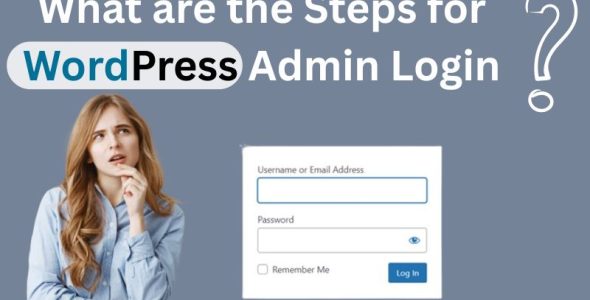From Bounce to Conversion: Redesigning UX/UI Strategies for Improved Click-Through Rates and Visitor Retention
In today’s fiercely competitive digital landscape, capturing and retaining the attention of WordPress website visitors is a daunting challenge. High bounce rates and low click-through rates (CTR) are common pitfalls that hinder the success of online businesses. However, by strategically redesigning user experience (UX) and user interface (UI) elements, companies can transform bounce-prone WordPress websites into conversion-driven platforms that effectively engage users and drive meaningful actions. This article explores key strategies for optimizing UX/UI design to enhance CTR and visitor retention, ultimately leading to improved conversion rates and business growth.
The Impact of Bounce Rates on Conversion
Before delving into solutions, it’s essential to understand the implications of high bounce rates on conversion rates. A bounce occurs when a visitor lands on a webpage and exits without interacting further or navigating to other pages within the site. High bounce rates indicate a failure to capture user interest but also signal missed opportunities for conversion. Whether signing up for a newsletter, making a purchase, or filling out a contact form, every interaction represents a potential conversion contributing to business success.
Optimizing Page Load Times for Seamless User Experience
One of the primary factors influencing bounce rates is page load times. In today’s fast-paced digital environment, users expect WordPress websites to load quickly and seamlessly across all devices. Research indicates that even a one-second delay in page load time can significantly increase bounce rates. Therefore, optimizing WordPress website performance should be a top priority for businesses looking to reduce bounce rates and improve CTR.
Strategies for reducing page load times include optimizing images and multimedia content, minimizing HTTP requests, leveraging browser caching, and utilizing content delivery networks (CDNs) to distribute content efficiently. By implementing these techniques, companies can create a smoother and more responsive user experience, reducing the likelihood of users abandoning the site due to slow loading times.
Simplifying Forms and Checkout Processes
Complex or lengthy forms and checkout processes are major deterrents to conversion. Visitors who encounter barriers or obstacles during the signup or purchase journey are more likely to abandon their efforts and seek alternatives elsewhere. Therefore, streamlining forms and checkout processes is critical for improving conversion rates and enhancing user satisfaction.
UX/UI redesign strategies for simplifying forms and checkout processes include minimizing the number of required fields, providing clear and concise instructions, implementing autofill functionality, and offering guest checkout options for first-time users. Additionally, incorporating progress indicators and visual cues can help users track their progress and feel confident about completing the transaction.
One often overlooked aspect of optimizing UX/UI design is ensuring that your website is inclusive and accessible to all users. Referring to a content accessibility guide can help you implement best practices, such as proper contrast ratios, keyboard navigation, and screen reader compatibility. By making your content accessible, you not only improve user experience but also expand your audience and foster greater visitor retention.
Implementing Responsive Design for Mobile Compatibility
With the proliferation of mobile devices, optimizing WordPress websites for mobile compatibility is no longer optional—it’s imperative. Mobile users represent a significant portion of internet traffic, and WordPress websites that fail to provide a seamless mobile experience risk losing potential customers to competitors.
Responsive design is a UX/UI strategy that ensures WordPress websites adapt and render effectively across various screen sizes and devices, providing a consistent user experience regardless of the platform used. By embracing responsive design principles, companies can cater to the needs of mobile users and capitalize on opportunities for engagement and conversion. Key elements of responsive design include flexible layouts, fluid images, and touch-friendly navigation menus, all of which contribute to a more intuitive and user-friendly mobile experience.
Industries Benefiting Most from Redesigned WordPress Web Design
The impact of redesigned web design extends across various industries, with some sectors experiencing significant benefits from implementing strategic UX/UI enhancements. Here are a few examples of industries that are reaping the rewards of redesigning their web design:
E-commerce
Optimized web design can greatly benefit the e-commerce industry. By improving navigation, simplifying checkout processes, and enhancing product presentation, e-commerce businesses can increase conversions and drive revenue growth. Intuitive search functionalities and personalized recommendations further enhance the shopping experience, leading to higher customer satisfaction and loyalty.
Finance and Banking
In the finance and banking sector, user trust and security are paramount. Redesigned web design can help financial institutions build credibility and instill confidence in users by prioritizing clear communication, easy account access, and robust security measures. Streamlined account management tools, interactive financial planning resources, and responsive customer support channels contribute to a positive user experience and foster long-term relationships with clients.
Healthcare
The healthcare industry is undergoing a digital transformation, with redesigned web design playing a crucial role in improving patient engagement and access to care. User-friendly interfaces for patient portals, appointment scheduling systems, and telemedicine platforms enhance convenience and accessibility, empowering patients to take control of their health journey. Educational resources and personalized health recommendations also contribute to better health outcomes and patient satisfaction.
B2B Companies
In the realm of business-to-business (B2B) commerce, companies are leveraging redesigned B2B web design to streamline processes and enhance collaboration with clients and partners. Intuitive interfaces for procurement portals, CRM platforms, and project management tools improve efficiency and facilitate seamless communication. By prioritizing user-centric design principles and incorporating features tailored to the needs of B2B users, companies can strengthen relationships, drive revenue growth, and gain a competitive edge in the marketplace.
Incorporating Persuasive Design Elements to Drive Engagement
Beyond optimizing technical aspects, persuasive design elements can play a crucial role in encouraging user engagement and interaction. Persuasive design leverages psychological principles and behavioral techniques to influence user behavior and motivate desired actions. From compelling calls-to-action (CTAs) to persuasive copywriting and social proof elements, incorporating persuasive design elements can captivate users’ attention and guide them toward conversion.
Examples of persuasive design elements include scarcity tactics, such as limited-time offers or low-stock notifications, which create a sense of urgency and encourage immediate action. Social proof elements, such as customer testimonials, reviews, and endorsements, build credibility and trust, assuring users of the value and quality of the product or service. Companies can effectively nurture leads and drive conversions by strategically integrating these elements into the UX/UI design.
In conclusion: Key strategies for optimizing UX/UI design to enhance CTR and visitor retention
Transforming bounce-prone WordPress websites into conversion-driven platforms requires a strategic UX/UI design approach. By focusing on optimizing page load times, simplifying forms and checkout processes, implementing responsive design, and incorporating persuasive design elements, companies can create a seamless and engaging user experience that encourages interaction and drives meaningful actions. Ultimately, businesses can enhance CTR, reduce bounce rates, and achieve sustainable growth in the digital marketplace by prioritizing user-centric design principles and also continually refining their approach based on data and user feedback.

 My Account
My Account 

